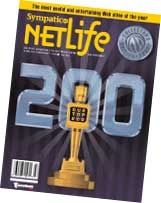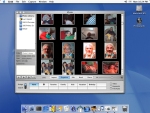Have your glasses adjusted!
 Back in November I wrote about the importance (and delight) of cleaning your glasses well.
Back in November I wrote about the importance (and delight) of cleaning your glasses well.
Yesterday I took my glasses into Ron Boyles at Boyles Optical because they were falling off my face.
Too many episodes of sitting on them, having Oliver pull them off my face and try to eat them, etc. had put them out of alignment.
Ron took my glasses out to his secret laboratory in the back, spent five minutes with them, and returned to spend another couple of minutes fitting them to my head.
The result is wonderful: my glasses not only no longer fall off my head, but they appear to fall in the best possible location to allow their optical magic to work.
Ron also cleaned my classes using special optical potions (I think), and they are sparkling clean.
Ron says you should have your glasses adjusted every 4 or 5 months. I think he’s right.
Although Oliver and I received some minor local renown for our Compass “today’s Island weather brought to you by…” Vogue Optical singing, Catherine and I both get our glasses from Boyles Optical, and can highly recommend their services. They’re in the Polyclinic, right across the hall from Lawton’s drugstore.
 Congratulations to our client
Congratulations to our client 
